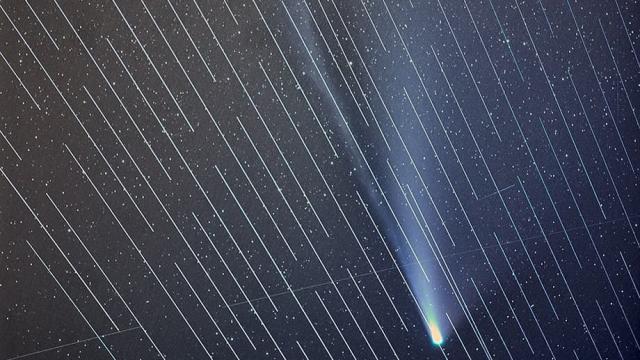The U.S. Federal Communications Commission recently announced the winning bidders of its Rural Digital Opportunity Fund Phase 1 auction, revealing SpaceX’s Starlink won a massive $US885 ($1,177) million to provide high-speed internet to underserved and unserved rural areas of the U.S. The agency’s report provided information on how much money every ISP won and in what states, but no specifics — just a broad map of what types of internet coverage should be rolling out over the next 10 years.
However, Cooperative Network Services (CNS), which is owned by a collective of 20 cooperative telephone companies serving areas in Minnesota, Iowa, Michigan, North Dakota, and South Dakota, has combed though all of the data from the auction results and put it into a single map, showing exactly where SpaceX and other major ISPs won bids.
Even though SpaceX won bids in 35 states, most of its winning census blocks (how the FCC measures geographic areas; they’re about the size of city blocks) are located in the Northwest, the South, and the Northeast. There are a sprinkling of census blocks in California, Nevada, and Minnesota where it committed to providing coverage, but most of the middle of the country remains untouched — including Texas, where Elon Musk is allegedly moving to get a tax break. SpaceX received $US80.4 ($107) million to cover more than 52,000 locations in Washington state, $US72.7 ($97) million for nearly 29,500 locations in Montana, and $US63.1 ($84) million for 59,200 locations in Pennsylvania, according to Business Insider.
SpaceX was also awarded around $US5.8 ($8) million to bring its satellite internet service to just a few tiny census blocks in California, which included unpopulated portions of Solano County, Orange County, Contra Costa Country, as well as homes in the mountains of Mendocino County. That’s not every location, just some of the tiniest of splotches on the CNS map. Other ISPs fill out much larger portions of the state, like LTD Broadband and GeoLinks, as you’ll see on the map. Even Frontier got a bigger piece of the California pie than SpaceX.
It’s worth noting that those small towns just outside the borders of SpaceX’s winning census blocks could still be offered service. Just like HughesNet and Viasat, you can theoretically get internet from anywhere in the U.S. as long as you have a satellite dish that points in the right direction and nothing obstructs the signal, be it weather or trees. It’s currently the most common way to provide rural America with internet.
While HughesNet and Viasat satellites are in geosynchronous orbit with Earth, or rotating with the earth, Starlink satellites are low-earth orbit (LEO) and constantly move around Earth. If they didn’t, they’d fall out of orbit. Sure, LEOs can get better broadband speeds and better latency because of their proximity to Earth, but it’s a more complicated process, especially on the consumer side. Essentially, someone’s internet connection will have to bounce between multiple satellites to keep a stable connection rather than connect to a single one. And Starlink has suffered from connection outages as of late.
But satellite internet is faster to roll out to consumers because it requires no digging or laying cable. There’s the hurdle of launching the actual satellites into space, but SpaceX has been pretty successful with that — and it’s no small cost to launch each rocket either. SpaceX’s Falcon 9 rockets are partially reusable, so that can help alleviate some of the cost, but a single Falcon 9 launch costs an average of $US57 ($76) million, according to Air & Space Magazine. With SpaceX getting $US885 ($1,177) million over the next 10 years — assuming it rolls out internet coverage as it’s supposed to — that amounts to roughly 15 rockets carrying up to 60 rockets a piece for a total of 900 satellites, more than what it needs to complete its 12,000 satellite constellation. That doesn’t even account for the cost of each individual satellite.
As of today, SpaceX has launched close to 900 Starlink satellites. But that’s only enough to offer coverage in some areas, not around the globe, according to the company. With FCC money, SpaceX has enough to help it cover the entire world with internet, but not within its promised 2021 time frame. For it to achieve that, SpaceX needs to spend around the same amount as it’s getting from the FCC in a year — not 10 years.
Also, for Starlink to be successful in the U.S., its service needs to be cheaper. Still in beta testing, Starlink’s internet service costs $US100 ($133) a month with a one-time equipment fee of $US500 ($665). Wide-spread internet coverage is only part of the equation when it comes to closing the digital divide. The second half is cost. Even if Starlink can provide enough bandwidth to millions of users and keep latency down, not everyone can afford to shell out $US600 ($798) bucks for their first month of Starlink internet, according to Pew Research Centre.
It’s going to have one hell of a time trying to convince people in lower income brackets to subscribe to its service without subsidies (if service is even available to them).
Starlink is still an extremely unproven internet provider, and it has two possible avenues in the next year: It could fail to deliver on its promise to provide global internet coverage, or even enough coverage in the U.S., or it could meet its goal and then use federal money to pay off any debts it incurred doing so over the next decade. Of course, both of those scenarios are pure speculation — it just seems like the FCC’s timeframe and SpaceX’s timeframe are not aligned. But many people living in rural America are pinning their hopes on Starlink, because so many ISPs have already failed them.
